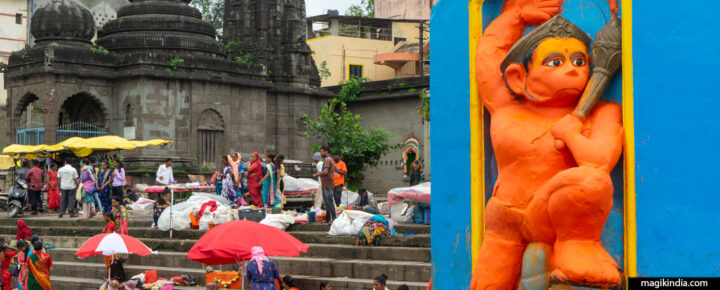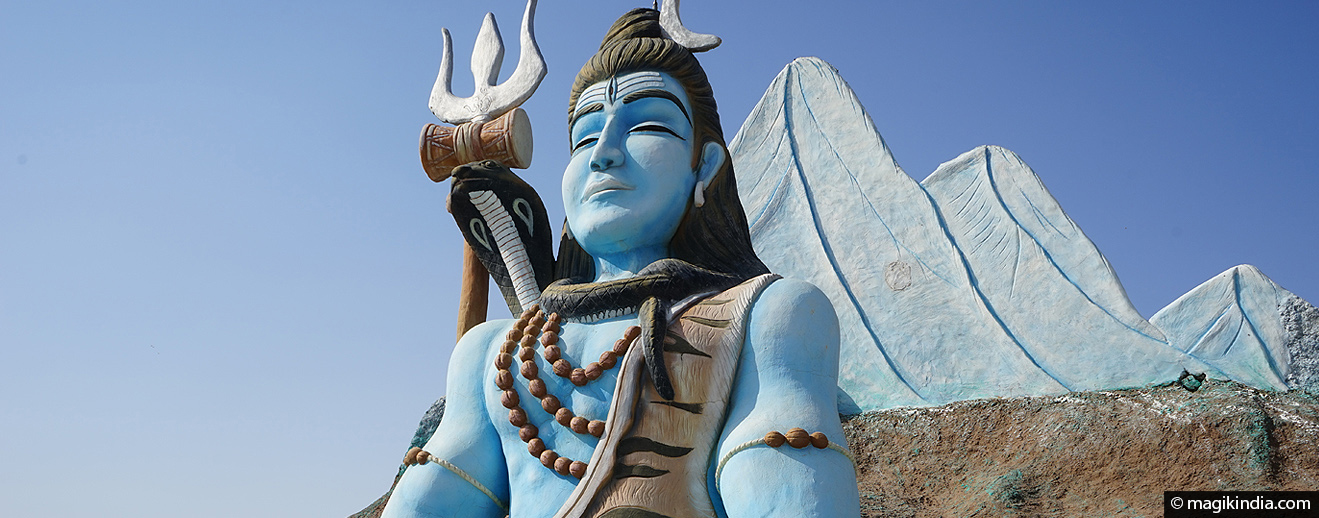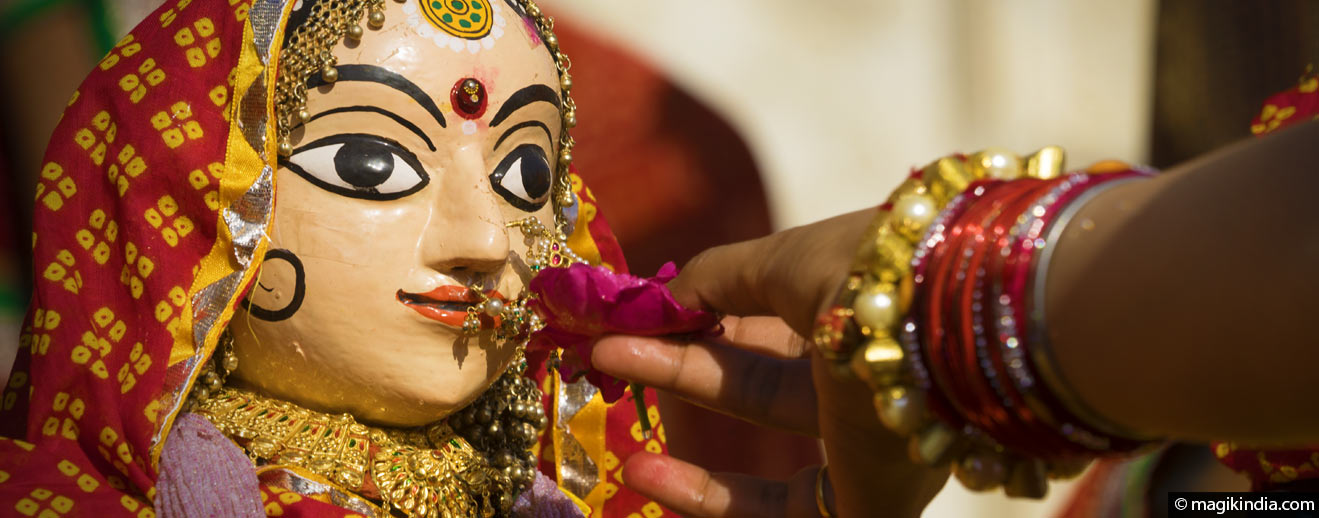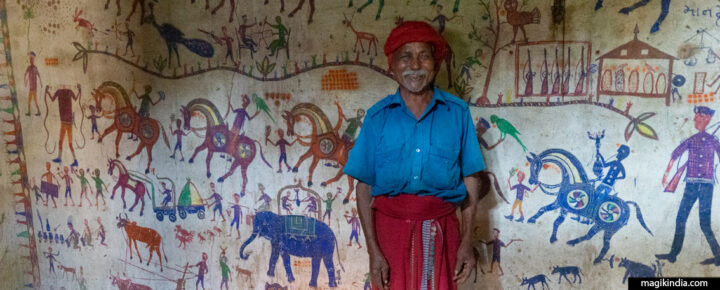
A Pithora painting, even reproduced on a canvas, is above all considered a sacred ritual. It is performed by the Adivasi Rathwa people of Chhota Udepur and Panchmahal districts in Gujarat. These colorful naive frescoes that seem to belong to millennial times, illustrate the mythology and the daily life of the Rathwas.
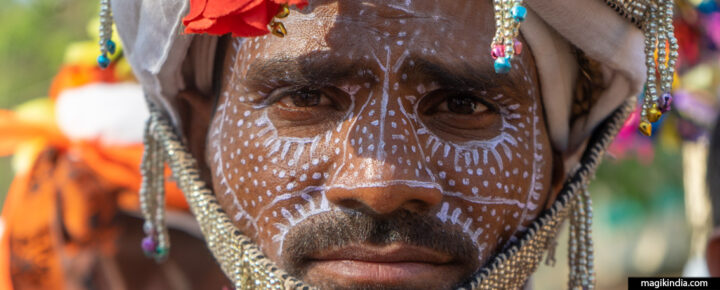
The Kavant fair or Kavant Gher Mela, which is held in the village of the same name, near Chhota Udepur (Gujarat), is the last part of the spring festivities of the Adivasi Rathwa community. It takes place on the third day after the Holi festival and brings together thousands of people who come to celebrate …
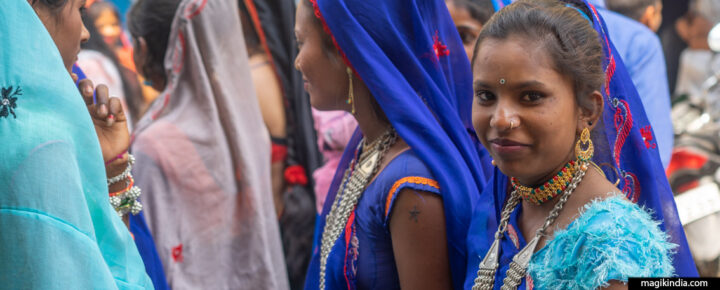
Recently declared a “cultural heritage” of Madhya Pradesh, Bhagoria is a festival that not only celebrates the arrival of spring and the end of harvest, but also love! It is indeed known for its “vivaah mela”, its marriage fair. Bhagoria falls during the Hindu month of Phalgun (February/March), seven days before the Holi festival and …
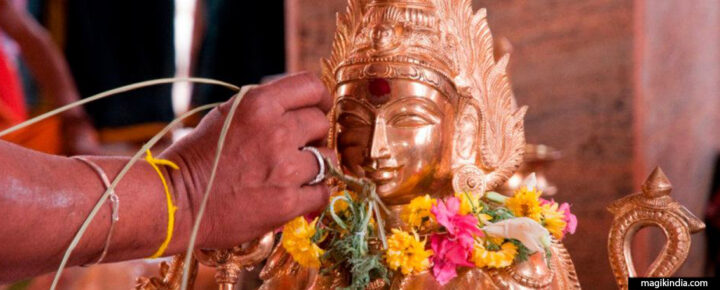
In Tamil Nadu, the nine-day Navaratri festival honoring the Shakti or universal primordial force, is celebrated in a unique way by venerating successively three goddesses: Durga, Lakshmi and Saraswati; three days are dedicated to each of them. This festival punctuated by precise rituals symbolically ends with the victory of light over darkness called Vijayadashami.
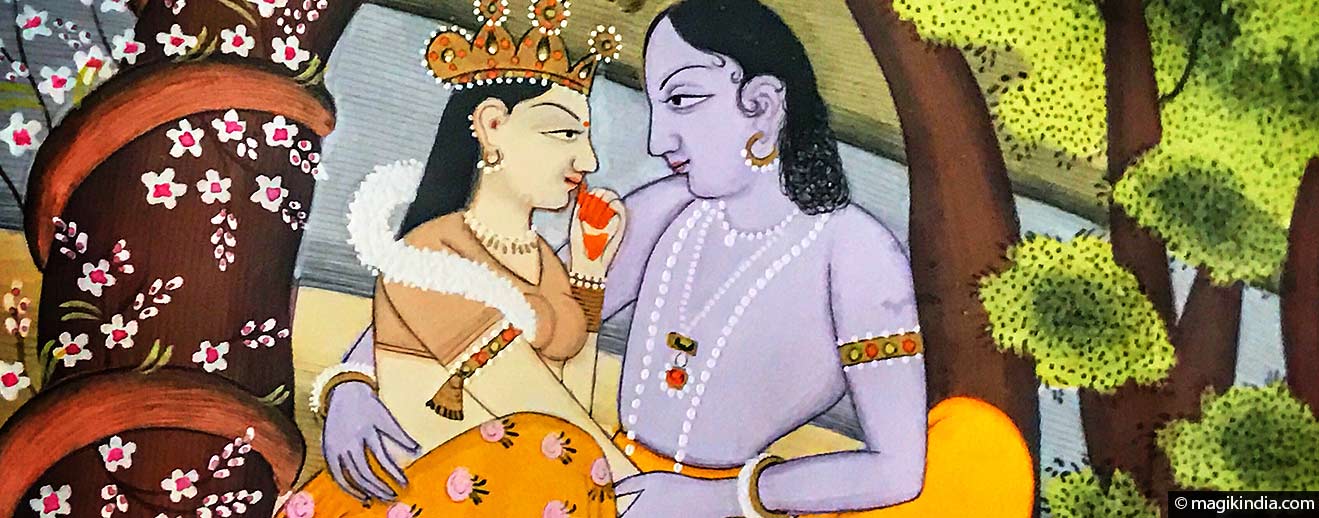
Radhakrishna represents the unique union of the Goddess-gopi Radha and her beloved Krishna, two highly revered deities in the Hindu Vaishnavite tradition. Radhakrishna is not any romantic relationship or simply the combination of the feminine and the masculine: it symbolizes the soul seeking the Divine Love.
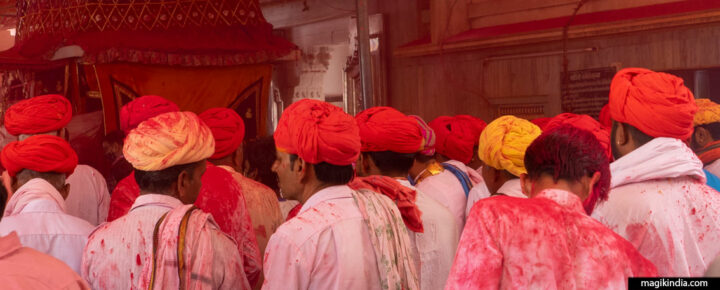
Charbhuja Garhbor is one of the four major Hindu shrines in the Mewar region of Rajasthan along with Shrinathji, Shri Eklingji and Kesariyaji. Located in the charming village of Garhbor about 30 kilometers from Kumbhalgarh Fort, this shrine, cared for by the Gurjar community, has a long history dating back to Vedic times over 5,000 …

Holi is one of India’s best-known festivals, providing great material for photographers from all over the world. Its marks the beginning of spring and takes place at full moon in the lunar month of Phalgun (February-March). It is known as the festival of colours and also the festival of love, commemorating the divine love of …
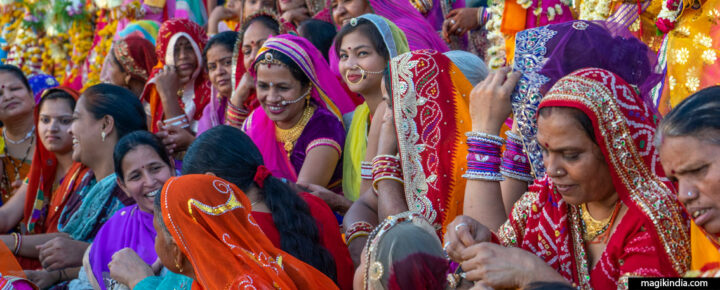
India still suffers from a bad reputation. Archaic, poor, dirty… Gandhi’s country is fortunately not limited to these few adjectives. India is, above all, a palette of unique sensations and intense and subtle emotions. Whether you dislike or love India, this millennial land never leaves you indifferent! As I’ve been living in this great country …
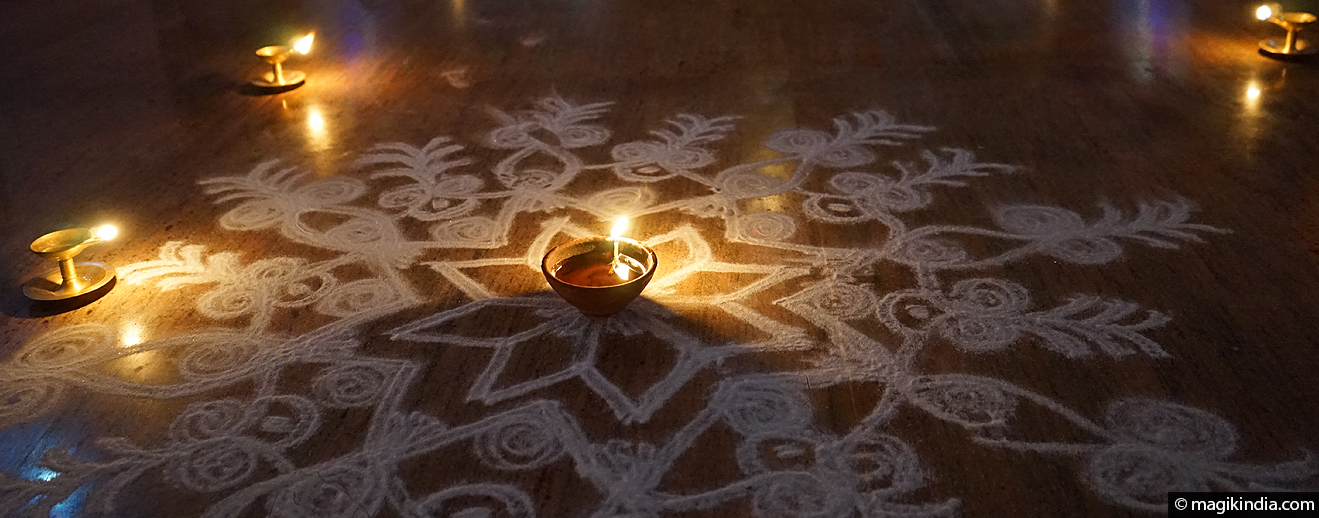
Kartighai or Kartikai Deepam is a Hindu festival of lights that is mainly celebrated in Tamil Nadu, South India. It falls at the full moon (purnami) between mid-November and mid-December –the month of Kartikai in the Tamil calendar, when the moon is in conjunction with the constellation Kritika, the Pleiades.
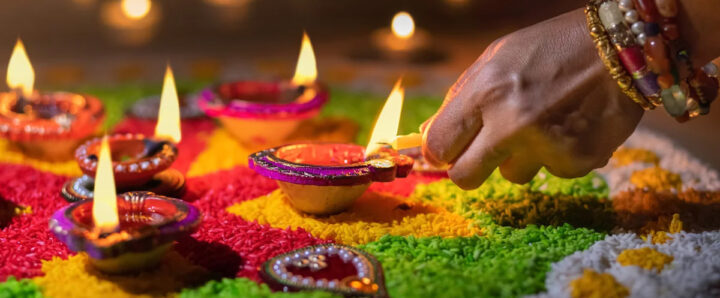
At the new moon in the month of Karthik (October-November) Hindus celebrate Diwali, one of their major festivals, also called the “festival of lights”. It symbolises the spiritual victory of light over darkness and of knowledge over ignorance.The name Diwali derives from the Sanskrit dipavali. Dipa means ‘lamp’ or ‘light’ and avali means ‘series’ or …
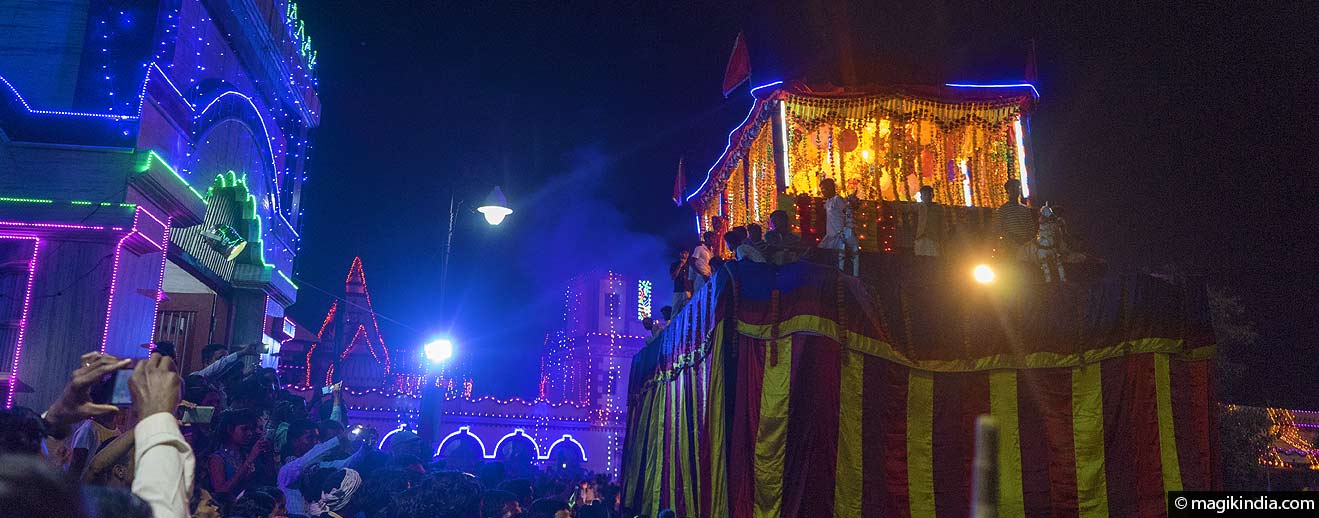
Dussehra is a festival celebrated mainly in North India; It takes place after the nine days of the Navaratri festival and marks the victory of the God Rama over the king-demon Ravana or the triumph of the Goddess Durga over Mahisasura. However, the Dussehra Festival of the Bastar region in the state of Chhattisgarh is …
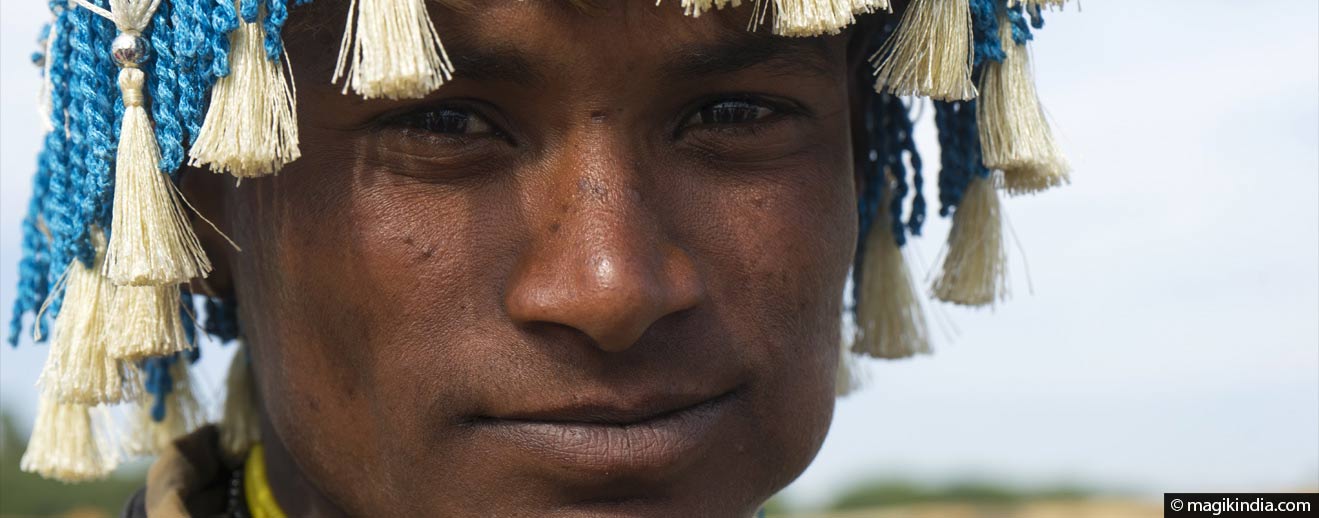
Baneshwar Fair is a huge folk fair held in Dungarpur district in Rajasthan. The 5-day event, which is sometimes called the “tribal Kumbh Mela”, takes place in January or February on a small delta where the Soma and Mahi rivers meet. It is primarily a religious festival, but it is also the annual get-together for …
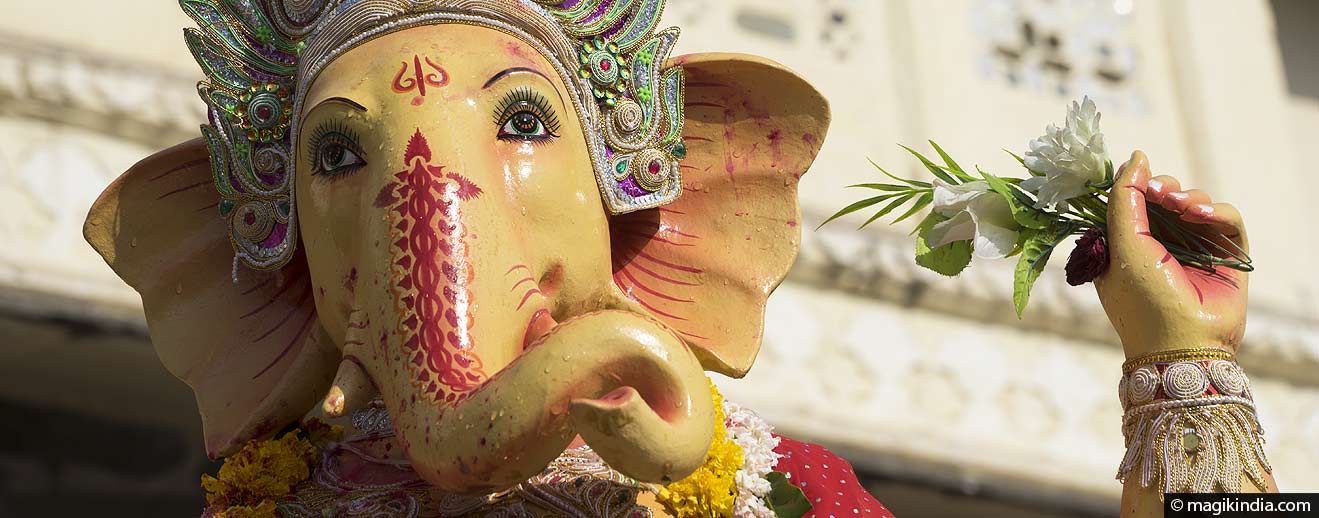
Ganesha Chaturthi is one of the main Hindu festivals. It celebrates the birth of Ganesh, the famous elephant-headed god, son of Lord Shiva and the goddess Parvati. Ganesh is supposed to have been born on Shukla Chaturthi (the fourth day of the waxing moon) of the Hindu month of Bhadrapada (mid-August to mid-September). Ganesh symbolises wisdom, …
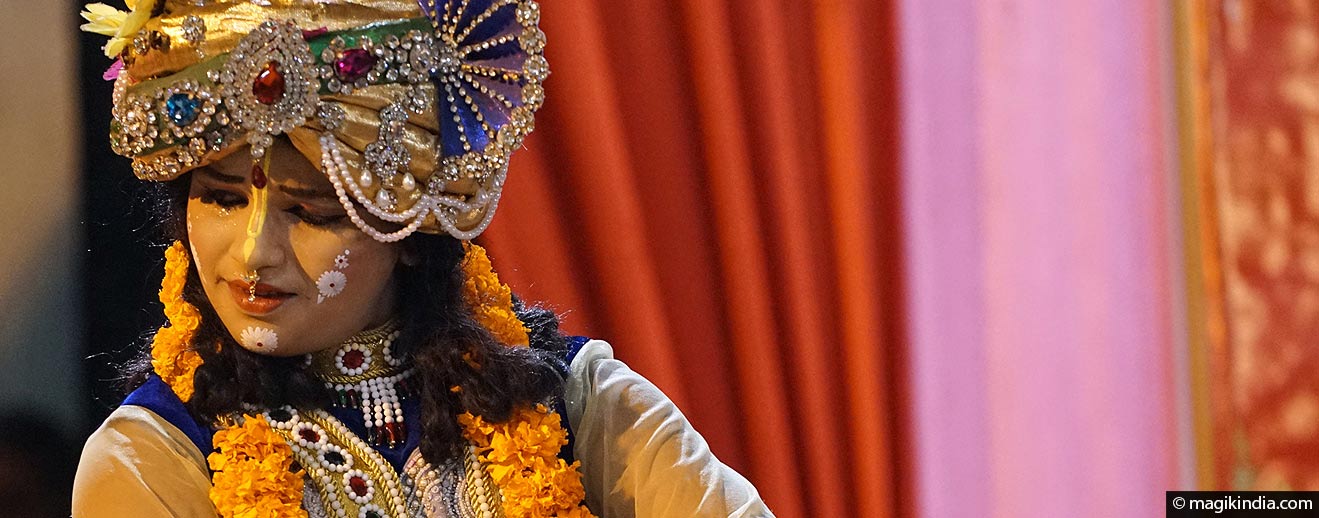
The Hindu festival of Krishna Jayanti or Krishna Janamashtami marks the birth of the dark-faced, flute-playing god Krishna. He is one of the most popular gods in the Hindu pantheon and the story of his life has influenced in many ways the culture of India. Krishna has many faces: he is the symbol of pure …

Raksha Bandhan or Rakhi is a Hindu festival that takes place every year in August, mainly in the North of India, and celebrates the unique bond of love, protection and respect between brothers and sisters. This celebration delivers a strong message of fraternity so that this ceremony extends often to the other members of the …

The Sanjhi is an ancient art of religious origin, which consists of creating drawings on the ground or on water using finely cut stencils that are filled with colored powders. Traditionally, this art depicts the mythological legends of India and especially those of Lord Krishna. The Sanjhi, which has gradually fallen into disuse, has nevertheless …
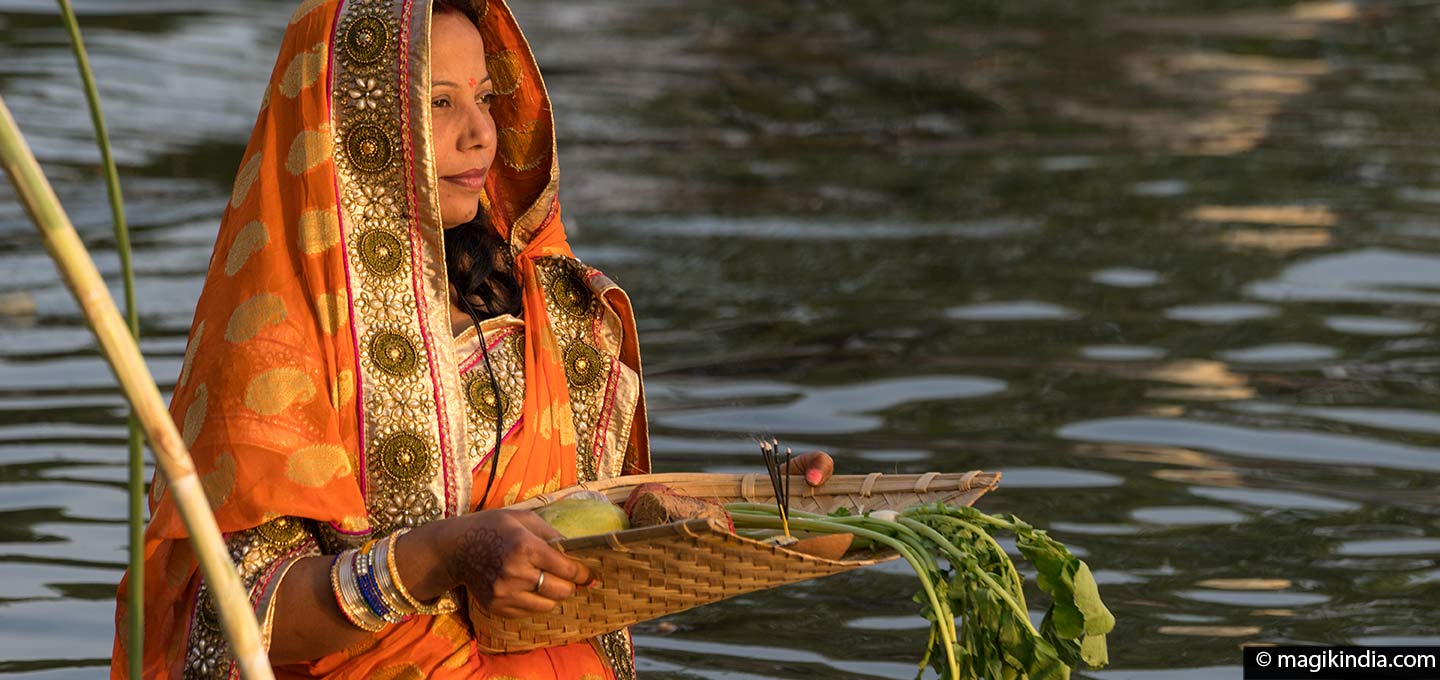
Originally from the state of Bihar, in north-east India, the festival Chhath Puja celebrates and thanks Surya and Usha, the sun-god and the goddess of dawn, sources of life and primordial energy. This tribute to the sun comes just after the festival of lights (Diwali) in October-November and is the occasion of elaborate rituals dating …

